#nmec
Explore tagged Tumblr posts
Text
Unveiling Wonders: Why The National Museum of Egyptian Civilization Belongs on Your Bucket List
the new national Museum of Egyptian Civilization is outrageously amazing photo by ©THE ART TRAVELLER ALL RIGHTS RESERVED Firstly, the architecture is beautiful. It’s a striking building with lavish landscaping and, in the middle of crowded Cairo, a wonderful sense of space. It’s also full of facilities: theatre, a Roman-style amphiteatre, cinema and all kinds of rooms for different functions.…

View On WordPress
0 notes
Text
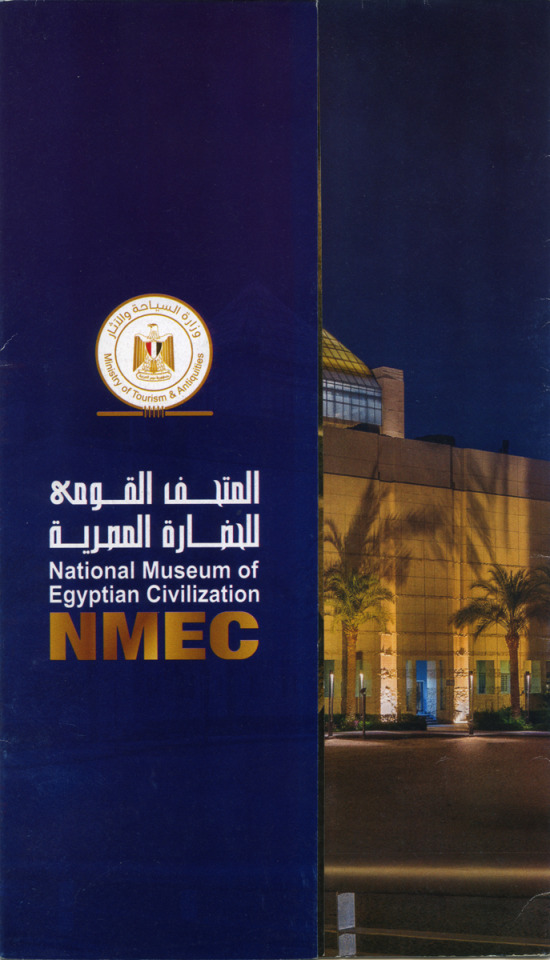
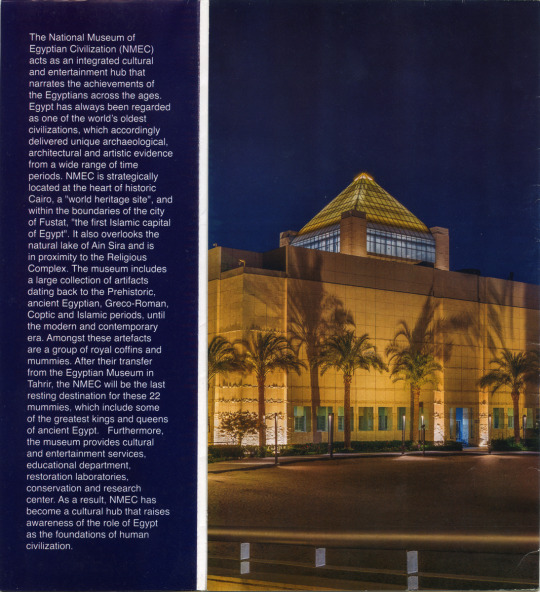

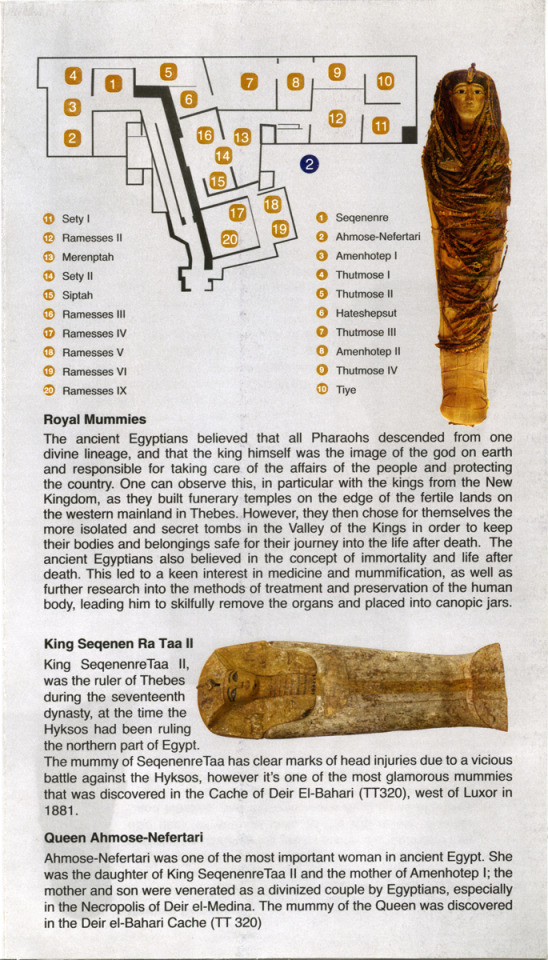


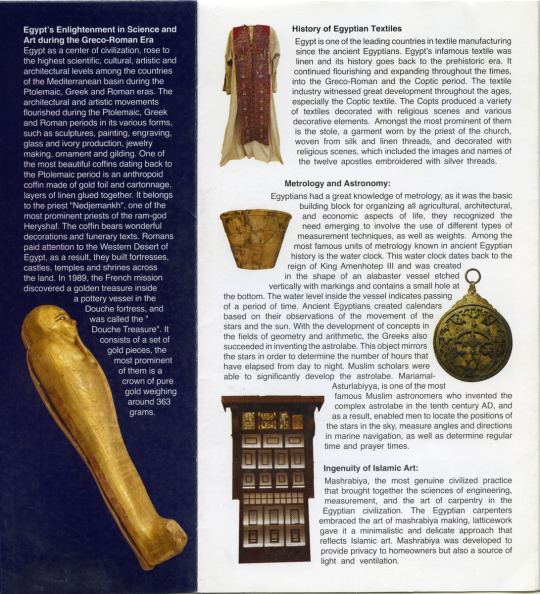


National Museum of Egyptian Civilization, Cairo
1 note
·
View note
Text

Mummy of Hatshepsut
The mummy of Hatshepsut, one of Egypt's most famous female pharaohs, has been the subject of significant archaeological and forensic research. Hatshepsut reigned during the 18th Dynasty (around 1479–1458 BCE), and while her tomb and her many monuments were discovered, her mummy was not immediately identifiable. For years, the location of her final resting place remained uncertain.
Now in the National Museum of Egyptian Civilization (NMEC), Cairo. JE 56264
Read more
165 notes
·
View notes
Text
fiber art adventures in egypt
I recently got back from a trip to Egypt & finally got around to organizing some pictures to share. One of the things I was most excited about was seeing what I could find on fiber arts and textiles.
Dropping everything under a read more, 'cause this will be a long post haha
first visit: the National Museum of Egyptian Civilization (NMEC)
At the time of visiting, they had a special textiles exhibit. It covered Pharonic Egypt all the way up to modern times, although I only had time to check out the dynastic & a bit of the Coptic portion of the exhibit (which was what I was really hoping to see anyways)
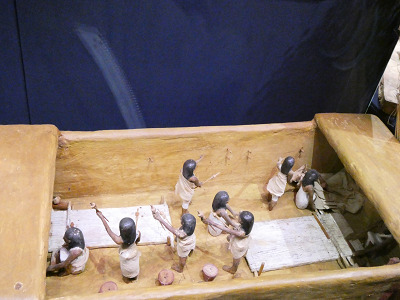

Was super excited to see this diorama in person. I knew about it but had never seen good pictures of it. From the little I've seen of ancient Egyptian spinning, spinning with two spindles seems to be the norm rather than a master technique? It also shows up in tomb art, which the exhibit also shared:

They also used a different fiber preparation (splicing to create a rove of fiber, no traditional drafting to my understanding) so that probably made a difference? Regardless I really want to see if I can replicate the technique, especially because their spindles look so similar to modern spindles??
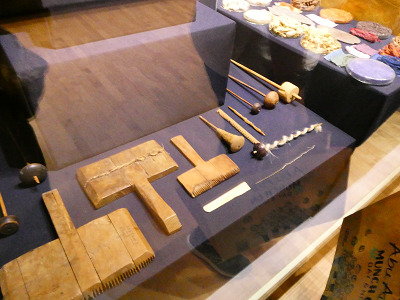
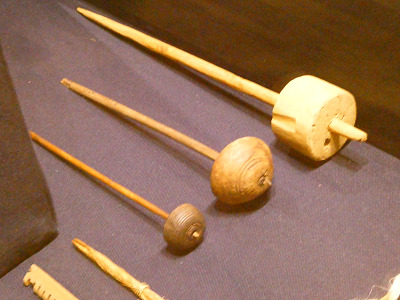
I took so many pictures of spindles, guys, and I fully intend to either have a few replicas made or to learn to make some myself. Also, although they were unlabeled... I'm pretty sure those are beaters for weaving? That was a bit of a trend with this trip, so much stuff was unlabeled :( I would've killed to at least get some date estimates for some of the stuff they had on display. I was nerding out in here though, and my family took a few pictures of how excited I was getting. A bit embarrassing, but eh haha
The exhibit also had a section on natural dyes used with a fun visual;
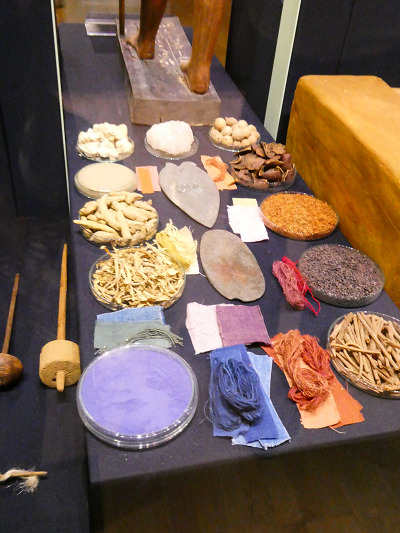
There was several diagrams specifically describing each dye source, but in the interest of not overloading on pictures I'll just list them out. For blues; woad, Yellows; turmeric, safflower, saffron, or yellow ochre; reds; madder, henna, pomegranate, and kermes. I originally thought kermes was another way to say cochineal, but it only seems to be distantly related.
next visit: Ramses Wissa Wassef Art Center
A small art center dedicated to hand-weaving wool and cotton tapestries. All of their work was museum quality & awe inspiring!!
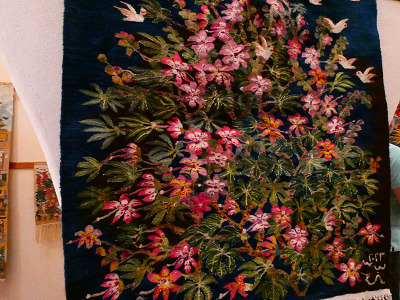
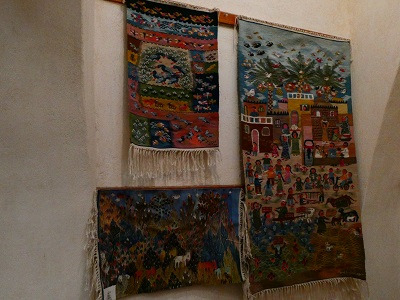
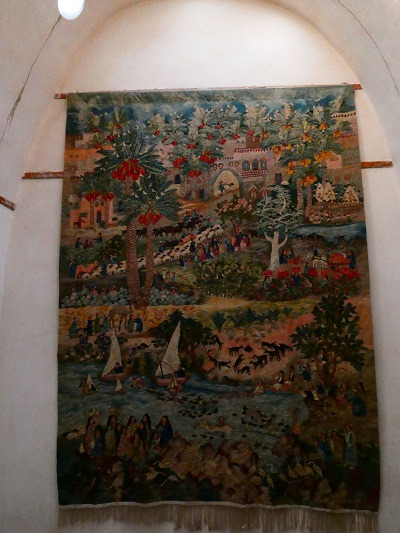
Was even invited to their back rooms to watch a few of their weavers working; no I don't have room to put a room-sized loom anywhere but heck do I want one now

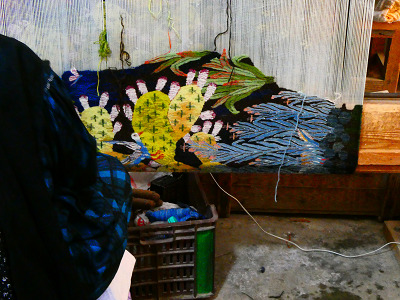
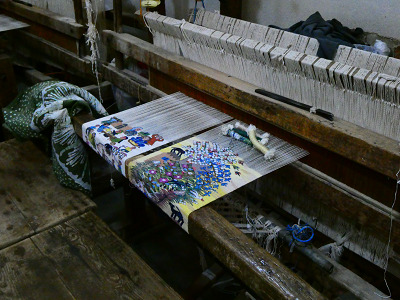
Our guide that took us through talked a bit about the natural dyes they use (all of their dyes are dyed in house with what they grow in their dye garden!!!) and got excited to hear I was also interested in natural dyes! He seemed a bit disappointed I'd never worked with indigo and. while indigo scares me, I'll take it as a sign that maybe I should try some time this year haha.
final visit; the Egyptian Museum
we really had to rush through this one which was a huge shame because it's packed full of artifacts. Also, the lighting in there is atrocious, so apologies for the not great pictures ahead.
They had a fascinating display of textile tools, more than what the NMEC had;

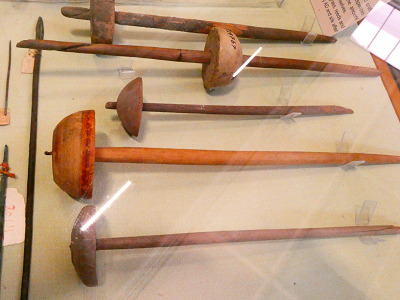

(Hand for size reference) I want all of these spindles! So badly! But a few of them look so much like a few of the spindles I own already?? A few of them had a spiraling notch, that's so cool? But also, what's going on with the one with two whorls? I have no idea. I'm fascinated.
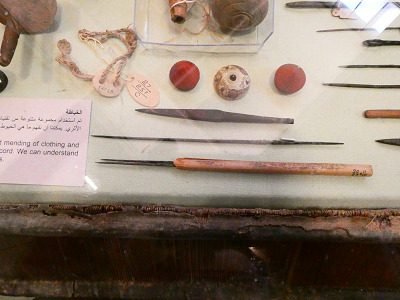

Look at these whorls!! Although again, I'm a bit confused; the lack of labeling strikes again. Unsure why some of these "whorls" have two holes, or what the metal object with the wooden handle is. The display implies sewing needles, and some of them do look like it, but others.... really don't look like sewing needles. I'm absolutely enchanted by this little whorl though. I think it has birds on it?
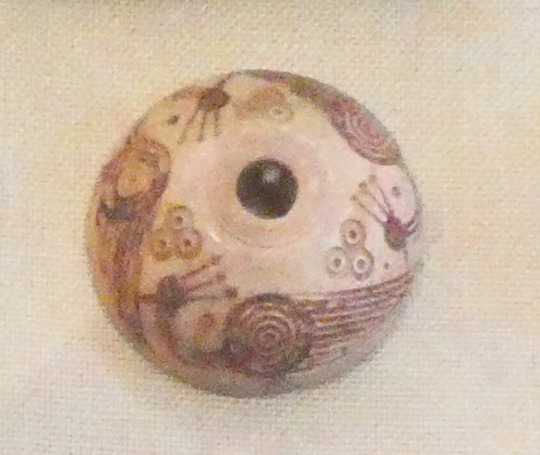

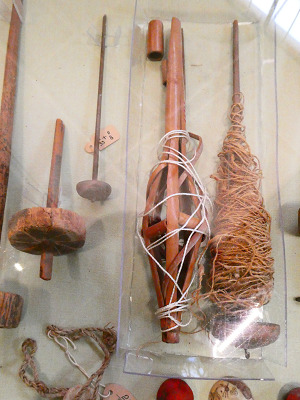
More objects that I'm baffled by- the signage doesn't really indicate what some of this stuff is, if it's even known. Also confused by the object wrapped in white string in the right pic; it looks like a distaff but to the best of my knowledge the (ancient at least) Egyptians didn't use distaffs. It probably popped up in later times and was put in this display since it was still relevant, but I'm still not sure.
I have so many more pictures & thoughts but I'll save those for more specific future projects. I've been doing research outside this trip on ancient Egyptian spinning techniques and desperately want to go deeper into that, this trip just solidified how excited it makes me. If you made it all the way through this, many thanks for reading!
Bonus; look at this ancient linen 🥺

#hand spinning#archaeology#extant artifact#weaving#fiber arts#long post#letters from skylark#sorry for the overall low quality images in this post. Got a new camera and wasn't the best at using it this trip#also the raw image files were huge so I heavily downsized them to make sure this post wasn't a beast to load#would be happy to share the raw images if desired though
279 notes
·
View notes
Text
𝙰𝚂𝙻𝙸𝙷𝙰𝙽 𝙵𝙰𝙷𝚁𝙸-𝙱𝙰𝙸𝙻𝙴𝚈 & 𝙺𝙷𝙰𝙻𝙸𝙻 𝙷𝙰𝚂𝚂𝙰𝙽 & 𝙽𝙰𝚃𝙷𝙰𝙽 𝙲𝚁𝙰𝙽𝙴

Despite having a rough past few days, the baby decided to actually be more merciful towards her today. Which, considering she was seeing Khal at the museum, was greatly appreciated. She'd been able to get through the tour rather well, able to stay on task with her information and answering any questions he may have as they walked around. Glancing up at him, leading him through the third and final floor of the ancient exhibit, her head tilted slightly. "So? Is it a bit too early to ask what your favourite part is so far?" she joked warmly. "I promise, there is no wrong answer. I like being aware of what's caught people's attention or what people were hoping to see. I make sure to write it all down to keep in mind for the future." She already was talking with a couple of museums in Egypt for when the time comes for the exhibit update. Making sure to keep in mind what can or can not be exchanged. So far, nothing from NMEC or GEM is allowed, which is understandable. As she looked around, her smile grew at the sight of another familiar face and she waved. "Hey, are you good if I introduce you to someone? He means a lot to me and I think you'll like each other."
𝚌𝚕𝚘𝚜𝚎𝚍 𝚜𝚝𝚊𝚛𝚝𝚎𝚛: 𝚙𝚛𝚘𝚟𝚒𝚍𝚎𝚗𝚌𝚎 𝚙𝚎𝚊𝚔'𝚜 𝚗𝚊𝚝𝚞𝚛𝚊𝚕 𝚑𝚒𝚜𝚝𝚘𝚛𝚢 𝚖𝚞𝚜𝚎𝚞𝚖 ; 𝚊𝚙𝚛𝚒𝚕 ��𝟼𝚝𝚑, 𝟸𝟶𝟸𝟹 || @khalilhassan & @nathanccrane
22 notes
·
View notes
Text
One of the most famous—and famously outspoken—Egyptologists is Hawass, Egypt’s former minister of antiquities. For decades, he has worked to return a number of high-profile Egyptian artifacts to his country, including the Rosetta Stone (housed at the British Museum), the Dendera Zodiac (in the Louvre) and the bust of Nefertiti (in the Neues Museum). With the opening of the GEM imminent, Hawass in October launched an online petition asking these European museums to send the Egyptian treasures back home. So far, the petition has garnered more than 130,000 signatures.
“These are our monuments,” Hawass says. “The Rosetta Stone is the icon of our Egyptian identity. Without the Rosetta Stone, there is no archaeology of Egypt. It’s really sad to see in the [Dendera] temple a replica of the zodiac, and the original is in France.”
In September, a group of Egyptian archaeologists launched a separate petition similarly seeking to return the Rosetta Stone. Called Repatriate Rashid, the campaign demands that Egypt’s prime minister submit an official request to the British Museum. Complicating both repatriation pushes is the fact that the London institution is governed by an act of British Parliament expressly prohibiting the return of artifacts unless they are “duplicates” or “unfit to be retained in the collections of the museum.” Even in other instances when the museum wanted to return objects, court rulings and strict policies have prevented it from doing so.
While some key ancient artifacts remain abroad, Egyptian officials have had considerable luck in securing others’ return.
“Egypt is one of the countries that’s had the most consistent, driven repatriation effort,” says Alice Procter, a historian of material culture and the author of The Whole Picture: The Colonial Story of the Art in Our Museums and Why We Need to Talk About It. “The Egyptian government has been largely pretty successful in getting objects returned, and that’s partially due to the fact that so many pieces have been taken illegally in a very easily documented way.”
Many of these recently returned, illegally trafficked artifacts were looted in the chaos of the 2011 Arab Spring and sold to museums like the Metropolitan Museum of Art in New York City. Following international investigations, the Met has sent dozens of pieces back to Egypt, including the golden coffin of a high-ranking priest, which is now on display at the NMEC. In May, French prosecutors charged the former president of the Louvre, Jean-Luc Martinez, with complicity in fraud and money laundering linked to Egyptian antiquities purchased by the Louvre Abu Dhabi. The court’s decision is expected in February.
“Egypt has put in every possible effort to try to repatriate its objects,” says Ahmed Issa, Egypt’s newly appointed tourism minister. “But we’re also 100 percent committed to all the laws. Every piece that has left Egypt lawfully is owned by the person who owns it. But every piece that has left Egypt unlawfully, we’re going to exert every possible effort to return that piece to Egypt.”
— Who Gets to Tell the Story of Ancient Egypt?
#lauren keith#who gets to tell the story of ancient egypt?#history#archaeology#museums#colonialism#arab spring#egypt#ancient egypt#usa#france#united arab emirates#zahi hawass#alice proctor#jean-luc martinez#ahmed issa#british museum#neues museum#metropolitan museum of art#louvre#louvre abu dhabi#rosetta stone#dendera zodiac#nefertiti bust
7 notes
·
View notes
Text
Le ministre a déclaré que le succès de la Pharaoh's Golden Parade témoignait de la riche histoire de l'Égypte et de ses ancêtres légendaires. Nombreux sont ceux qui ont eu envie de se rendre en Égypte et au Musée national de la civilisation égyptienne (NMEC) à Fustat après avoir vu les momies royales qui s'y trouvent dans le cadre de nos voyages en Égypte.
2 notes
·
View notes
Text
A tourism expert announced that Egypt seeks to increase the contribution of the tourism sector to the national product by 25%

Professor Magdy Sadek announced that countries are making every effort to advance and develop the tourism sector because tourism currently contributes 16%, and the state seeks to exceed this by 25%. He also added during the TV program "Good Morning Egypt" that the "Business Africa" platform has chosen Egypt among the top 10 tourist destinations for travel in 2025, which is a great and unprecedented achievement.
He explained that Egypt received more than 15 million and 700 thousand tourists during 2024, which indicates the unprecedented development in the tourism sector in Egypt. He pointed out that Egypt is making many important decisions to develop and support the tourism sector, the most important of which is providing more than 50 billion pounds to develop hotels and significantly increase the number of tourist rooms.
You will be able to see the most famous Egyptian tourist sites during Egypt tours provided to you by Cairo Top Tours. You should not miss our wonderful Egypt Day Tours with our professional team. Even if your flight will only stop for a few hours at Cairo Airport, you can choose one of the Cairo Day Tours from the airport that will allow you to spend a wonderful day exploring the most important landmarks of Cairo.
You can enjoy one of the most important entertainment tours in Egypt by booking the Cairo Nile Cruise Dinner from Cairo Airport, which will allow you to enjoy the best traditional shows while sailing on the Nile River. If you are fond of history and archaeological sites, you should not miss visiting the Citadel during the Layover Tour to Cairo Citadel and Khan El Khalili Bazaar to learn about the life history of Saladin. You can enjoy the best cultural entertainment tour in Egypt if you book the Giza Pyramids and Nile Felucca Boat Ride from the airport to visit the great pyramids of Giza and then enjoy riding the dazzling traditional felucca.
You can choose between quad bikes and camels that will take you on an exciting tour around the pyramids if you book the Quad Bike and Camel Ride in Giza Pyramids from the airport, which is one of the most famous tours in Egypt. You can visit one of the world's oldest and most beautiful palaces during the Baron Empain Palace Tour from Cairo Airport to learn the most important secrets of this wonderful palace. If you are interested in antiques and rare artifacts, you will not find a better choice than the Abdeen Palace Tour from Cairo Airport, which will take you on an exciting tour around the historic Abdeen Palace. You should not miss visiting two of the most important tourist sites in Egypt: the Giza Pyramids and the National Museum of Civilization. You will visit them during the Layover tour to NMEC and the Giza Pyramids from Cairo Airport, which is a priceless tour. If you prefer nightlife, book the Private Guided Night Tour of Cairo, which will take you on an enjoyable tour around Cairo.
@cairo-top-tours
0 notes
Text
Cairo 2024: Your Ultimate Adventure Guide
A City of Wonders

Cairo, the bustling capital of Egypt, is a captivating blend of ancient history and modern vibrancy. This city, often referred to as the "City of a Thousand Minarets," offers a treasure trove of tourist attractions that span centuries.
From the grandeur of the Pharaonic era to the intricate beauty of Coptic Christianity and the Islamic architectural marvels of Old Cairo, there's something to fascinate every traveller. Whether you're a history buff, an architecture enthusiast, or simply seeking a unique cultural experience, Cairo has it all.
In this blog, we'll delve into the must-see attractions that make Cairo a top destination for explorers worldwide.
The Pyramids of Giza
The Pyramids of Giza stand as towering testaments to ancient Egyptian ingenuity and architectural prowess. Located on the Giza Plateau, just outside Cairo, these monumental structures have captivated visitors for centuries.
The complex includes the three iconic pyramids of Khufu, Khafre, and Menkaure, each a testament to the pharaohs who commissioned them. These royal tombs were built approximately 4,500 years ago, showcasing the advanced engineering techniques of the time.

The Great Pyramid of Khufu, the largest of the three, holds a special place in history. It was the tallest structure in the world for over 3,800 years until the construction of the Lincoln Cathedral in the 16th century.
No visit to Egypt is complete without witnessing the grandeur of the Pyramids of Giza. Their sheer size and historical significance make them an unforgettable experience. Planning a trip to Egypt? The Egypt online visa makes it straightforward to see the country's ancient sites and diverse culture. This simple process allows travelers to receive their visas without fuss, giving them more time to enjoy renowned attractions such as the Pyramids, the Sphinx, and the Nile.
Don't forget to explore other nearby pyramid sites, such as Dahshur with its Red Pyramid and Bent Pyramid, and Saqqara with its renowned Step Pyramid. These sites offer a glimpse into the evolution of pyramid architecture in ancient Egypt.
The Great Sphinx

The Great Sphinx is an iconic and enigmatic monument located on the Giza Plateau. This colossal statue depicts a mythical creature with the body of a lion and the head of a human.
Carved from a single block of limestone, the Sphinx is believed to have been constructed during the reign of Pharaoh Khafre (2558-2532 BC). It is thought to represent the pharaoh himself, standing guard over the nearby pyramids.
The Sphinx's imposing presence and mysterious aura have captivated visitors for centuries, making it one of the most recognizable symbols of ancient Egypt.
The Grand Egyptian Museum

The Grand Egyptian Museum in Cairo is a must-visit for history enthusiasts and art lovers. This vast repository houses a staggering collection of over 136,000 ancient Egyptian artefacts.
From towering statues and intricate jewellery to papyrus scrolls and mummies, the museum offers a comprehensive overview of Egyptian civilization. Explore the galleries to witness the craftsmanship and artistry of ancient Egyptians and gain insights into their daily life, beliefs, and customs.
The National Museum of Egyptian Civilization

The National Museum of Egyptian Civilization (NMEC) is a cultural and historical gem nestled in the heart of Old Cairo, the city's first capital. Overlooking the serene Ain El Seera Lake, this museum is a testament to Egypt's rich and enduring heritage.
The NMEC showcases a remarkable collection of 50,000 artefacts that span over 5,000 years of Egyptian history. From the Prehistoric era to the Pharaonic, Archaic, Greco-Roman, Medieval, Coptic, Islamic, and modern times, the museum offers a comprehensive exploration of the nation's civilization.

Considered an archaeological marvel, the NMEC provides visitors with an immersive experience, allowing them to delve into the fascinating stories behind each artefact. The museum offers a captivating journey through Egypt's past.
Khan El-Khalili Bazaar

Khan El-Khalili Bazaar is a labyrinthine market that has enchanted visitors for centuries. Dating back to the 14th century, this bustling bazaar is a treasure trove of traditional Egyptian handicrafts.
Wander through the narrow alleys and be captivated by the vibrant colours, exotic fragrances, and intricate designs. From copperware and woodwork to textiles and jewellery, Khan El-Khalili offers a unique shopping experience.
Whether you're searching for souvenirs or simply immersing yourself in the local culture, this iconic bazaar is a must-visit destination in Cairo.
Islamic Cairo

Islamic Cairo, also known as Historic Cairo or Medieval Cairo, is a captivating district that offers a glimpse into the city's rich Islamic heritage. Centered around the Citadel of Cairo, this UNESCO World Heritage Site showcases the architectural and cultural achievements of early Islamic Cairo.
Founded in the 9th century, Islamic Cairo witnessed its golden age during the 14th century. Explore its narrow streets and discover a wealth of historical landmarks, including:
Mosques: Admire the intricate architecture and ornate decorations of mosques like Ibn Tulun Mosque, Hasan Mosque, and Al-Azhar Mosque.
Madrasas: Visit these ancient Islamic schools and universities to learn about the intellectual and religious pursuits of the past.
Hammams: Experience the traditional Turkish baths, a popular pastime in Islamic Cairo.
Fountains: Marvel at the beautiful fountains that once adorned the city's streets and public spaces.
Islamic Cairo offers a fascinating journey through time, inviting visitors to immerse themselves in the rich history and culture of this vibrant city.
Frequently Asked Questions
Is it safe to visit Cairo in 2024?
While Egypt has seen improvements in security in recent years, it's always recommended that you stay updated on travel advisories from your government. However, Cairo is generally a safe city for tourists, especially in popular tourist areas. It's essential to exercise common sense, be aware of your surroundings, and follow local guidelines.
What's the best time to visit Cairo?
The ideal time to visit Cairo is during the spring (March-May) or fall (September-November) when the weather is pleasant and comfortable. Avoid the peak summer months (June-August), as the temperatures can be extremely hot.
How many days do I need to explore Cairo?
A week is a good starting point for seeing the major attractions in Cairo. However, if you want to delve deeper into the city's history and culture or explore nearby destinations like Alexandria or Luxor, you might want to extend your stay.
What should I wear in Cairo?
While there's no strict dress code for tourists, it's respectful to dress modestly, especially when visiting religious sites. Avoid wearing revealing clothing, and consider bringing a scarf or shawl to cover your shoulders or head if necessary.
Can I haggle in the markets of Cairo?
Absolutely! Haggling is a common practice in Cairo's markets, and it's expected that you'll negotiate the price of items. Start with a lower offer than you're willing to pay, and be prepared to walk away if you're not satisfied with the price. Remember, a little friendly bargaining can go a long way.
What is the local currency in Cairo?
The local currency in Egypt is the Egyptian pound (EGP). It's easy to exchange currency at banks, exchange bureaus, and hotels. Credit cards are widely accepted in major tourist areas, but it's always a good idea to have some cash on hand for smaller purchases.
Is it possible to experience a traditional Egyptian meal?
Yes, there are many restaurants in Cairo that serve authentic Egyptian cuisine. Look for places that are frequented by locals for the most authentic experience. Some popular dishes include Koshari (a rice, lentils, and pasta dish), falafel, and shawarma. Don't forget to try a refreshing mint tea or a strong Turkish coffee while you're there.
Conclusion
Cairo, Egypt's lively metropolis, combines classic wonders with modern vigor. Explore iconic sights such as the Pyramids of Giza, the Sphinx, and the Egyptian Museum, all while immersed in the city's bustling bazaars and rich culture. Experience the vibrant atmosphere and breathtaking buildings that make Cairo unique. If you plan to visit Cairo, apply for an eVisa to ensure a smooth admission. Begin your journey to this magnificent destination, rich in history and charm.
#Egyptonlinevisa#bestplacetovisitinegypt#placetovisitEgypt#visatoEgypt#placesinEgypt#Egypttravelvisa#visaEgypt#evisaEgypt#Egyptianvisa#Cairo#cairoegypt#GreatPyramidofKhufu#TheGreatSphinx#TheGrandEgyptianMuseum#historicalgemofOldCairo#KhanElKhaliliBazaar#ancientegyptarchitecture#IslamicCairo#mosqueinegyptcairo#universitiesinegypt#turkishbath
0 notes
Text




Grabado de la diosa Hator en forma de vaca en el templo de Hatshepsut, Deir el Bahari.
Estatua de la diosa Hator en forma de vaca en el NMEC.
Grabado de diosa Hator en forma de vaca en el templo de Nefertari, Abu Simbel.
Grabado de la diosa Hator en forma antropomórfica, templo de Nefertari, Abu Simbel.
1 note
·
View note
Text
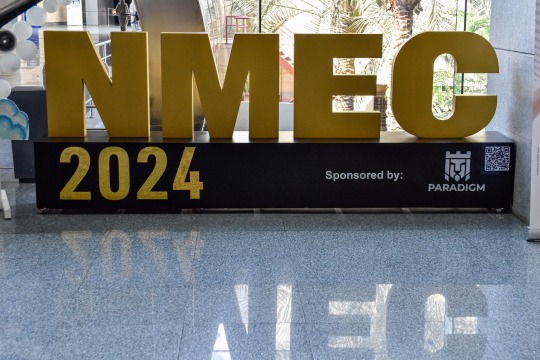

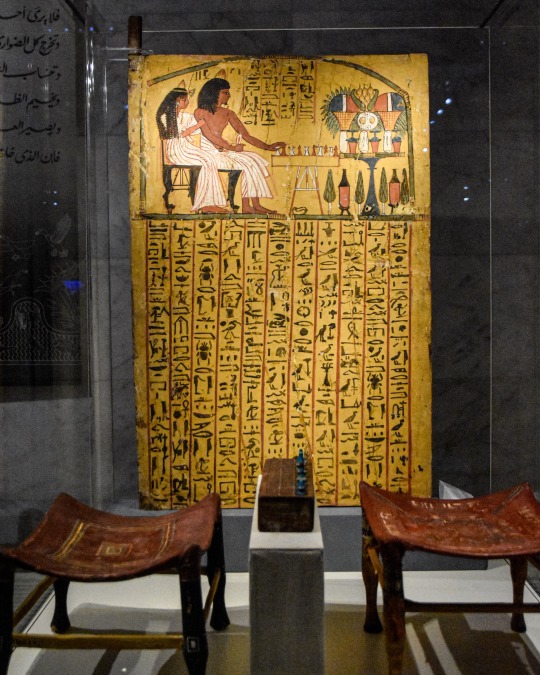
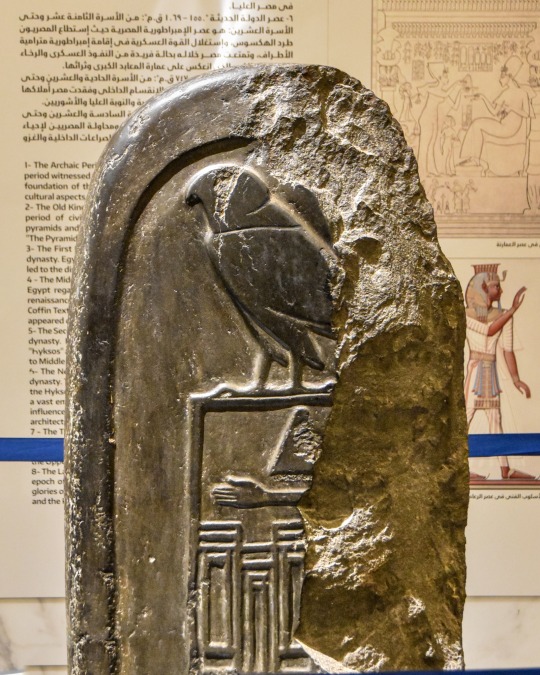
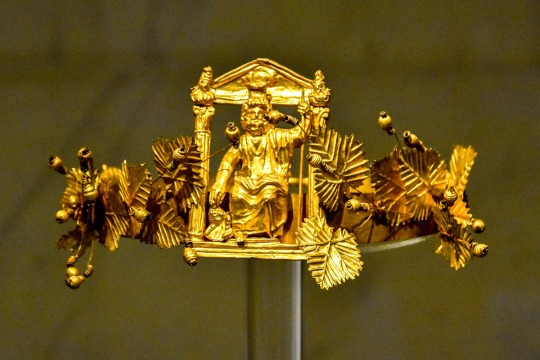
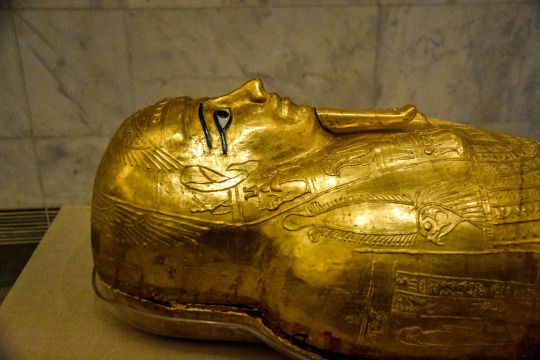



SATURDAY, OCTOBER 5, 2024 — CAIRO, EGYPT. Like the old Chad & Jeremy song says, "They say that all good things must end someday."
This morning we said a sad goodbye to the Viking Osiris and to the Nile River. We flew from Luxor to Cairo to spend our last night in Egypt. This has been a wonderful trip. We were very busy, we saw a lot, we learned a lot. And that's precisely why we came. It will take a while to process everything we've experienced. Becky and I have taken some wonderful trips in the past 16 years that we've been together. And I'm pretty sure that we will think of this as one of the best.
But we're tired now. And we can feel the tug of home. Still, we were eager to do our last excursion, a guided visit to the National Museum of Egyptian Civilization. It houses an impressive collection of historical artifacts, going back many thousands of years. And our guide (today it was Sherine, rather than our usual, wonderful Salah) has a deep and detailed knowledge of Egyptian history and culture. We saw and heard about a lot of fascinating relics. Like an ancient Egyptian make-up kit. A game board and two stools for those quiet evenings in the afterlife. Carvings and clothing and jewelry and kitchen tools and sarcophagi. And in the lower level, a mind-blowing collection of the actual mummies of actual kings and queens that we could see right up close. (But no photos allowed.) The NMEC is truly a wonderful and important place.
But for me, it all kind of mooshed together. (If you've been following this blog, maybe you feel the same way.) After all we've already seen and done on this trip, I think my brain is full. I was ready to be done.
So now we are back in our hotel, the stunning Intercontinental Cairo Citystars. The lobby has sphinxes and an obelisk! We will have dinner here tonight, then go to sleep, and head to the airport early in the morning for our long flight home. It's time.
I will close with some random thoughts and observations about our time in Egypt.
- This is the most foreign country I've ever been to. Everywhere else I've been has had its cultural roots in Europe. The primary language in Egypt is Arabic. Most people speak a little bit of English, but not very well.
- Security is a big thing here. Our bus had to go through checkpoints with armed guards almost everywhere we went. In fact, much of the time there was a man in a suit on our bus who had an awkward bulge on his hip. And once a woman in our tour group took a photo of a soldier from the bus window. But that soldier saw her do it, so he came onto the bus, took her phone, and erased the photo.
- The Nile River is the one and only thing that made Egypt a great nation. It provides all the drinking water, all the agricultural irrigation, and most of the commercial transportation. Beyond the Nile Valley, the other 95% of the country is desert. There are a few towns around oases out there. And there are still nomadic groups who roam the desert. But other than the fertile Nile Valley, Egypt ain't much.
- But it is a country with a history and culture so old that folks from a young country like the U.S. have a hard time comprehending it.
- I was pleased that there isn't much graffiti in Egypt, even in a big city like Cairo. But what there is, is in Arabic.
- It's always good to travel, but it's always good to go home again. There's no place like it. It's where the heart is.
It's been a good trip.
(And one more time, if you want to see the photos better, just click on them.)
0 notes
Text
0 notes
Text

Mummy of Ramesses II
The mummy of Ramesses II was among those found in the royal cache (DB320) at Deir el-Bahari, West Thebes. It was completely covered with linen bandages that bear the king’s name and epithets in Hieratic script.
The mummy has silky hair, which was white at the time of death, but has yellowed from the preservative chemicals. His nostrils were filled with resin and seeds, perhaps to better hold their shape.
According to the X-rays, the king was suffering from dental problems and severe arthritis in his hip joint. Ramesses II’s mummy was sent to Paris for further studies and preservation. The king most probably died in his late eighties or early nineties.
New Kingdom, 19th Dynasty, reign of Ramesses II, ca. 1279-1213 BC. Now in the NMEC, Cairo. JE 26214
Read more
122 notes
·
View notes
Text
Egypt receives 32 thousand tourists daily; "Tourism" shines in the last days of December in the Red Sea

The Red Sea Governorate is full of tourists, and this region is witnessing unprecedented tourism activity. This period is characterized by a boom in hotel occupancy and reservations and an increase in the number of tourists. Tourist villages and resorts receive thousands of tourists from all over the world daily due to the approach of New Year's and Christmas.Hurghada and Marsa Alam airports have received about 32 thousand tourists on 162 flights since last Saturday. Germans and Russians are the most frequent nationalities in the Red Sea cities, in addition to the British and Eastern European residents.
The government is keen to take all necessary health measures and controls in all Egyptian hotels and tourist resorts to ensure the safety and health of tourists. Hotels and resorts are making great preparations to hold celebrations and artistic and entertainment shows in both the Eastern and Western styles to celebrate Christmas. You will be able to enjoy the cheerful Christmas atmosphere during Egypt Holidays organized with great care by Cairo Top Tours. You will find many exciting tours with us. Check out the best Egypt shore excursions on our website.
We organize many of the best Port Said shore excursions that will enable you to visit Cairo, Alexandria, and Port Said. You can share the excursions from Sokhna Port with your friends so that you can choose the tour that suits your interests. We organize many wonderful tour programs, and the Egyptian Museum and quad bike trip from Sokhna Port is one of our best tours. If you want to enjoy a tour organized especially for you and your family, book the private full-day tour to the Pyramids and Papyrus Institute from Sokhna Port, which will take you on a trip to the best places for making papyrus.
You can visit the site where the first pyramid was built, Saqqara, during the Saqqara Day Trip from Sokhna Port to see the impressive Step Pyramid of King Djoser. If you want to have a comprehensive tour to see the most prominent landmarks of Cairo, book the Cairo Tower and Pyramids day tour from Sokhna Port to see the beauty of Cairo from the top of this magnificent tower. You can do many fun activities in one tour, such as visiting the Giza pyramids and the National Museum and taking a felucca ride from Sokhna Port that will allow you to visit the pyramids and the museum of the dazzling civilization and experience a felucca ride on the Nile River.
You can visit the most famous Egyptian holy churches by joining the tour from El Sokhna: Pyramids, Coptic Cairo, and Felucca Ride organized by Cairo Top Tours. We care about tourists who have a great passion for antiquities, so we organize trips to the NMEC & Dahshour Pyramids from Sokhna Port to take you on a tour inside the National Museum of Egyptian Civilization. You can book quick Cairo tours from Sokhna Port if you do not have much time to spend in Egypt.
@cairo-top-tours
0 notes
Text
0 notes
Text
O Museu da Mulher Egípcia está a ser criado no interior do NMEC: Funcionário
A Presidente do Conselho Nacional para as Mulheres, Maya Morsy, anunciou no domingo que está a ser criado um Museu da Mulher Egípcia no Museu Nacional da Civilização Egípcia em Fustat, numa área de 3.000 metros quadrados. O Grande Museu Egípcio, para as mulheres que estão a receber formação no âmbito do Projeto Nacional para o Desenvolvimento da Família e a ação para fazer face aos rentáveis motores da imigração ilegal. O conselho está em vias de criar uma unidade para apoiar as mulheres no registo das suas marcas, disse ela, para além da expansão do conselho na formação de poupanças digitais e no avanço de grupos em todo o Egipto e no reforço da adição fiscal das mulheres. Morsy elogiou o papel vital desempenhado pelo departamento de meios de comunicação do Conselho, chefiado por Suzan al-Qalini, na cobertura da imagem das mulheres retratada através de dramatizações, programas e anúncios. O Egipto tem bens e lugares muito antigos e, entre os lugares e túmulos e templos antigos, tem lugares verdadeiramente belos e condicionantes que se podem experimentar e, se decidirem experimentá-los, têm muitas passagens e tectos especiais com vistas maravilhosas e passagens e informações instigantes que têm de ser conhecidas e que não se encontram em nenhum lugar do mundo apenas no Egipto, estas passagens e estruturas fazem-nos ver esta exploração e muitos bens que eles prepararam para nos mostrar muitos bens que nos mostram o Egipto antigo e lugares bonitos como a passagem do Nilo e muitas cidades bonitas no Oceano Vermelho, Luxor, Assuão, Alexandria, Sharm El Sheikh e Hurghada, e ainda excursões de um dia ao Egipto que lhe permitirão aprender sobre a cultura de diferentes metrópoles no Egipto, oferecendo uma coleção diferente de passagens e pacotes de viagem para o Egipto, mostrando a fascinante história e as atracções naturais do Egipto. Os passeios de um dia no Cairo testemunham a beleza da história num dos nossos passeios no Cairo, onde pode seguir os passos dos ditadores através de tabernáculos e monumentos antigos. Também pode descobrir pontos arqueológicos dos nossos pacotes de viagem para o Egipto semelhantes ao único esplendor remanescente do mundo antigo, os Conglomerados de Gizé. Aprenda dados intrigantes sobre a história da megacidade enquanto percorre as suas ruas e faça algumas compras nas suas melhores lojas. O Cairo islâmico vai certamente proporcionar-lhe momentos de grande diversão. Excursões de luxo ao Egipto testemunham o epítome do luxo com as nossas exclusivas excursões ao Egipto. Estamos empenhados em fornecer aos nossos hóspedes sapientes um serviço inigualável e uma viagem cheia de substância durante as nossas férias de luxo. As excursões em terra do Egipto são uma assiduidade em crescimento rápido e um dos exemplos elegantes do turismo de massas no Egipto. As férias em família no Egipto a partir dos EUA permitem-lhe explorar locais emblemáticos como os Grandes Conglomerados de Gizé e os antigos tabernáculos de Abu Simbel, bem como desfrutar das velas do Nilo do Egipto. Pode também proteger-se nos fantásticos pedidos do Cairo ou nadar nas águas límpidas do Mar Vermelho.
0 notes